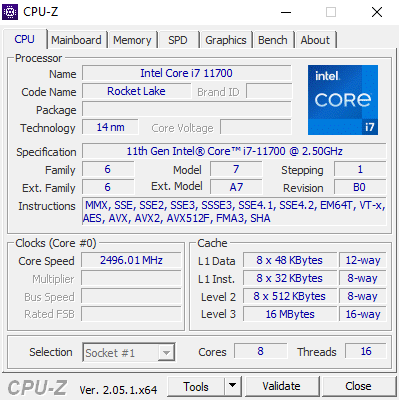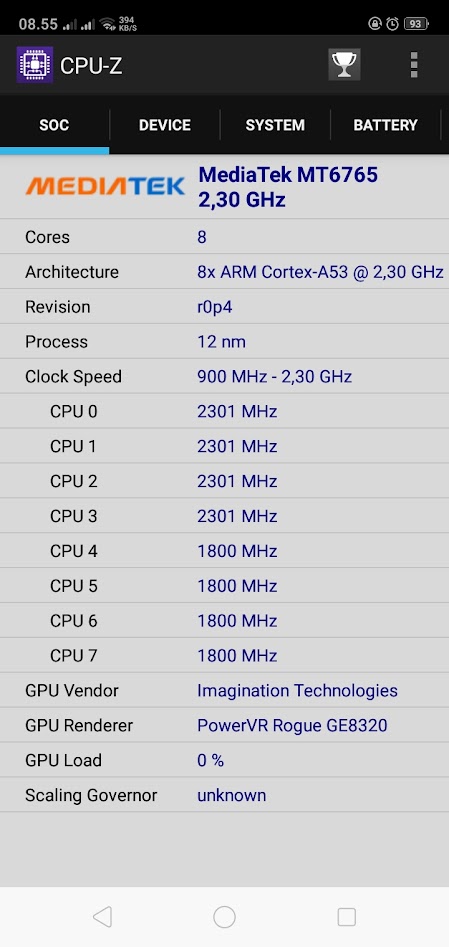Comparing: MediaTek MT6765 Helio P35 vs Intel Core i7 11700
In this comparison, we analyze two Processors: MediaTek MT6765 Helio P35 and Intel Core i7 11700, using synthetic benchmark tests to evaluate their overall performance. This side-by-side comparison helps users understand which hardware delivers better value, speed, and efficiency based on standardized testing. Whether you're building a new system or upgrading an existing one, this benchmark-driven evaluation offers valuable insights to guide your decision.

MediaTek MT6765 Helio P35
| Type: | Processors |
|---|---|
| Brand: | MediaTek |
| Model: | MediaTek MT6765 |
Specification Comparison Table
This specification comparison presents technical details of several devices or components to help you understand the key differences between each option. Use this table as a reference to determine which device best suits your needs.
| Specification | MediaTek MT6765 Helio P35 | Intel Core i7 11700 |
|---|---|---|
| Architecture | ARM | x86 |
| Technology | 12 nm | 14 nm |
| Clock | 1.8 GHz - 2.3 GHz | 2.5 GHz - 4.9 GHz |
| Core/Thread | 8 / 8 | 8 / 16 |
| Segmen | Mobile | Desktop |
Submission Comparison Table
This submission comparison table displays the number and details of benchmark data submissions from various devices or components. This information helps you understand the performance based on the benchmarks that have been tested, as well as providing an overview of the consistency and popularity of the available benchmark results.
Submission Comparison Chart
This chart visualizes the benchmark scores comparison between two hardware devices based on submitted data.
Media Gallery
A collection of photos of tested hardware. These images can help you identify the physical form, model, and variant of the hardware in question. These photos are from our own documentation, and if they are not available we may not be able to document them.
About Hardware MediaTek MT6765 Helio P35
The MediaTek Helio P35 (MT6765) is a mid-range mobile processor introduced in 2018, designed to offer a balance between performance, efficiency, and affordability. It features eight ARM Cortex-A53 cores, all running at speeds of up to 2.3 GHz, allowing for decent multitasking and responsiveness in everyday applications.
Built using the more efficient 12nm fabrication process, the Helio P35 is a significant improvement over older chips like the MT6750 or MT6737, both in terms of power consumption and thermal performance. This makes it well-suited for entry-level and mid-range smartphones with tighter thermal and battery constraints.
For graphics, the SoC integrates the PowerVR GE8320 GPU, which supports Full HD+ displays and provides enough power for media consumption and light gaming. It also includes support for AI-enhanced features, such as image processing and face detection, though without a dedicated NPU, the AI performance is modest compared to higher-tier chipsets.
While the Helio P35 is not intended for high-performance gaming, it performs well for tasks like social media, video playback, camera use, and general app usage. However, more demanding 3D games will run only at low graphics settings with occasional frame drops.
Hardware Detail:
Devices: OPPO A5s & OPPO A15s.
Device Specifications: MediaTek MT6765, 3/32 (A5s), 4/64 (A15s), Android 8 (A5s), Android 10 (A15s).
Room Temperature: 30°C based on DHT11 Sensor.
* Note: The OPPO A15s was used in some tests due to compatibility issues with Android 8 on A5s in certain applications.
Sunday, 08 September 2019 11:02:46 | Update: 1 month ago
About Hardware Intel Core i7 11700
The Intel Core i7-11700 is a powerful desktop processor released in Q1 2021, as part of Intel’s 11th Generation Rocket Lake family. Designed for enthusiasts, gamers, and content creators, this CPU offers a solid balance of single-threaded and multi-threaded performance. It features 8 physical cores and 16 threads, making it ideal for tasks such as gaming, streaming, 4K video editing, 3D rendering, and heavy multitasking.
With a base clock speed of 2.5 GHz and a maximum turbo frequency of up to 4.9 GHz, the i7-11700 delivers strong performance out of the box. The processor is built on Intel’s 14nm process node, but with significant architectural improvements over the previous generation, notably higher IPC (Instructions Per Cycle) thanks to the Cypress Cove core design. Despite using the older 14nm process, these architectural upgrades allow the i7-11700 to compete closely with AMD's Ryzen 7 5000-series CPUs in many workloads.
The TDP (Thermal Design Power) of the Core i7-11700 is rated at 65W, making it relatively efficient for a high-end CPU. However, under sustained heavy loads, especially in systems with aggressive power limits or PL1/PL2 settings, actual power consumption can be much higher—so a decent cooling solution is recommended for consistent performance.
For integrated graphics, the i7-11700 is equipped with Intel UHD Graphics 750, based on the Xe architecture. It supports up to 4K resolution at 60Hz, HEVC/VP9 decode/encode, and can handle light gaming or display output without the need for a discrete GPU. Still, for users focused on gaming or GPU-accelerated workloads, pairing this processor with a dedicated graphics card is highly recommended.
Hardware Detail:
Device: Dell OptiPlex 5090
CPU: i7-11700
RAM: 32GB
OS: Windows 10
Monday, 05 June 2023 13:51:38 | Update: 1 month ago




